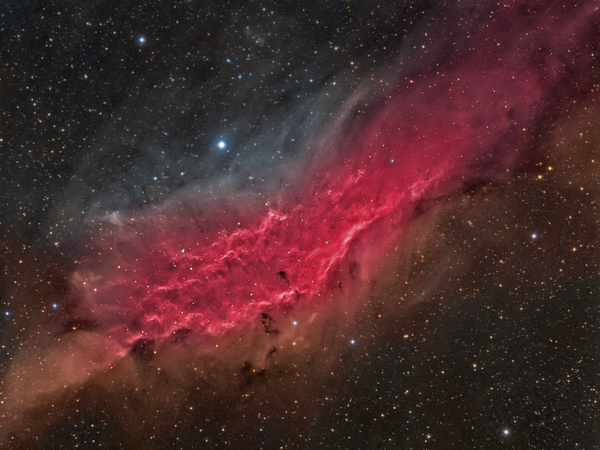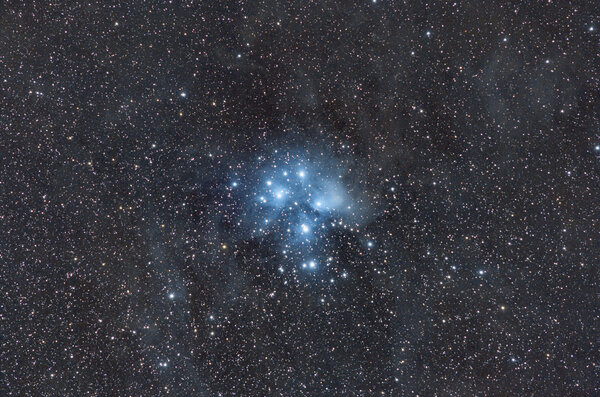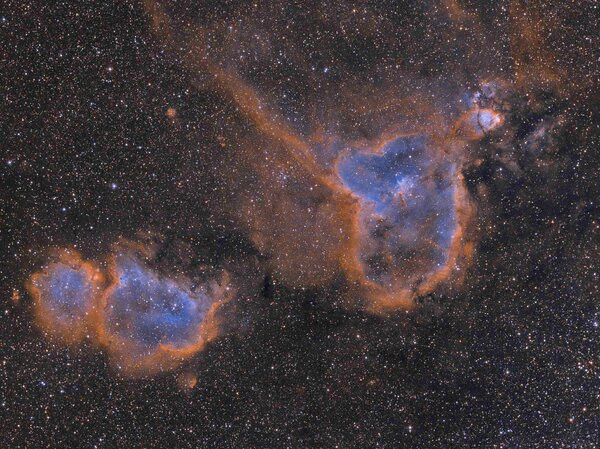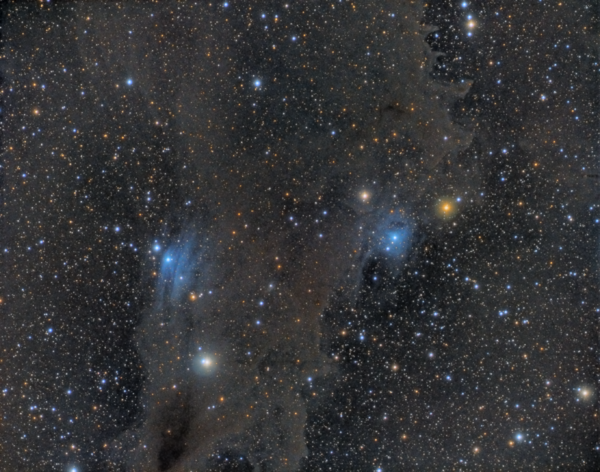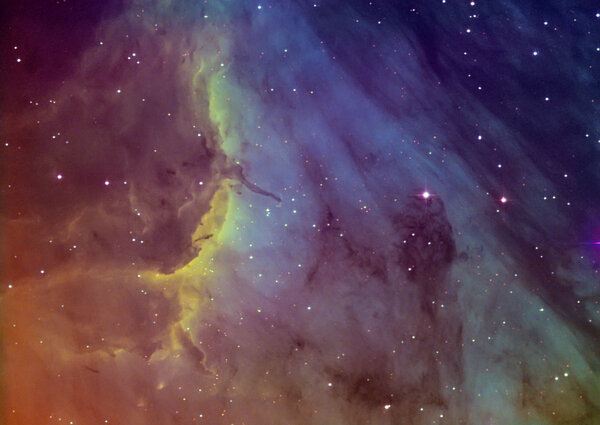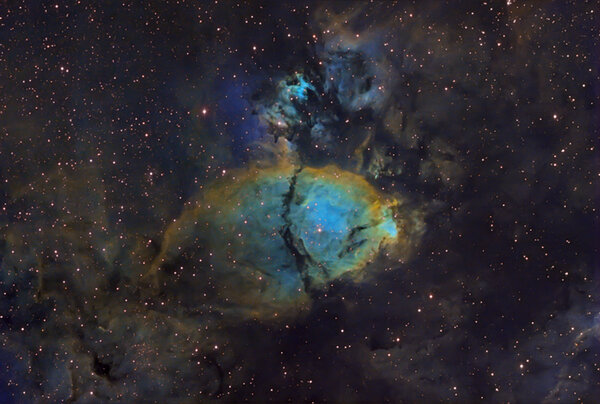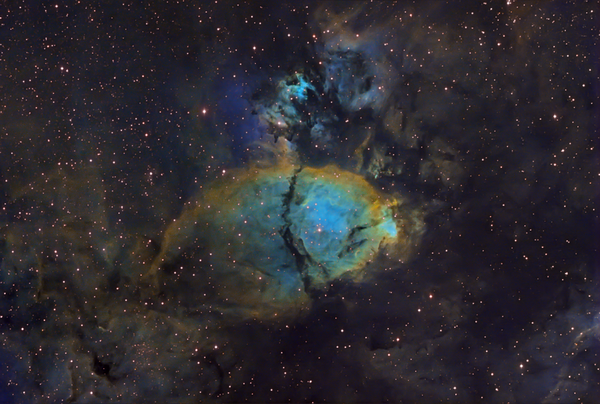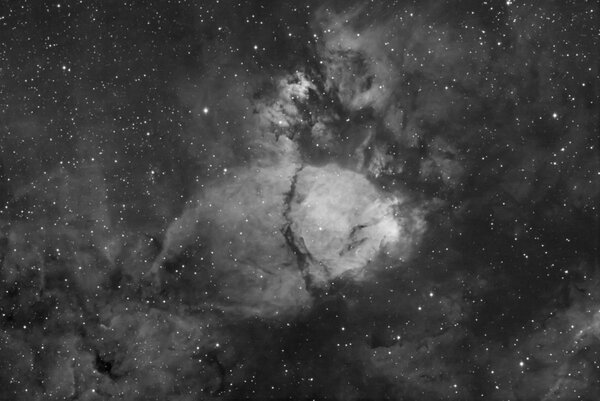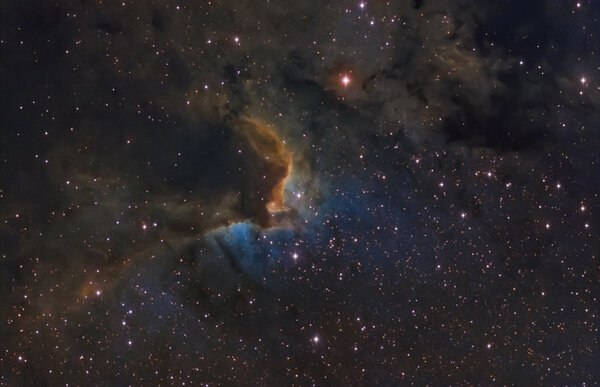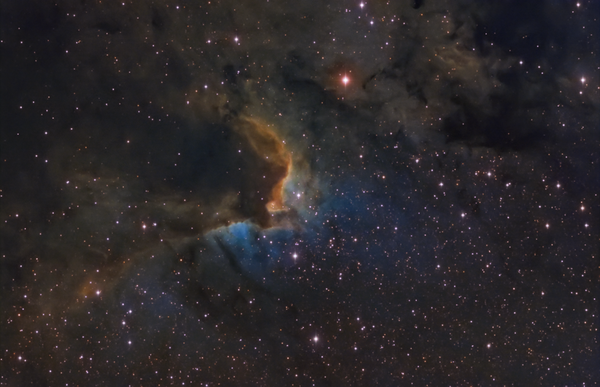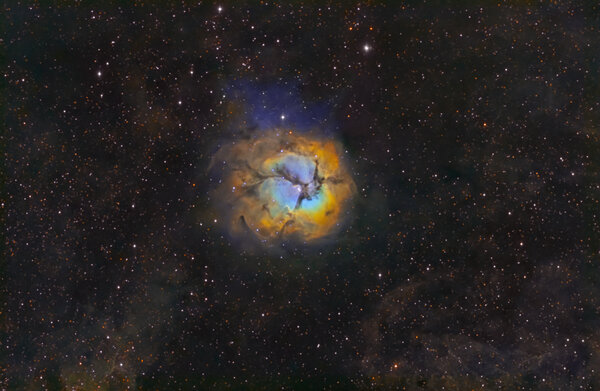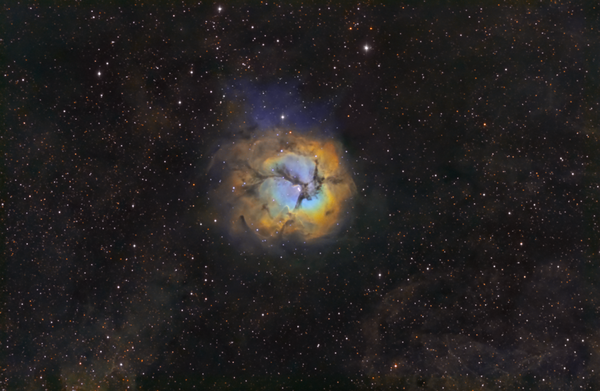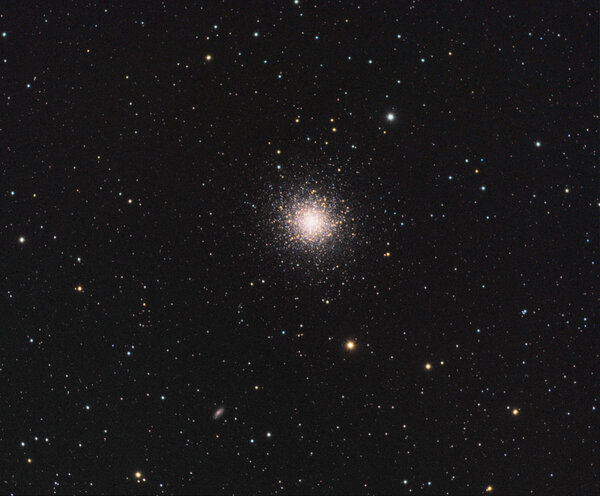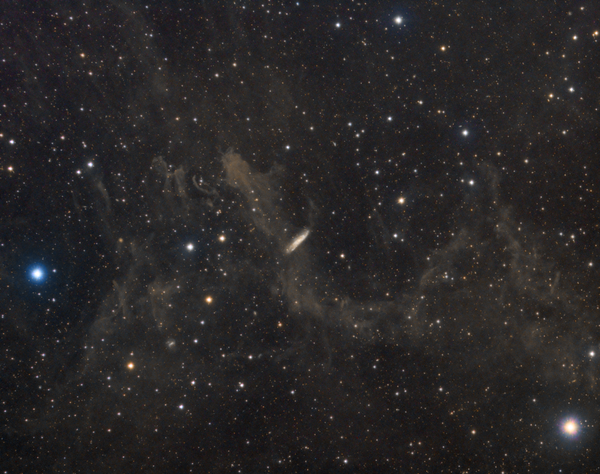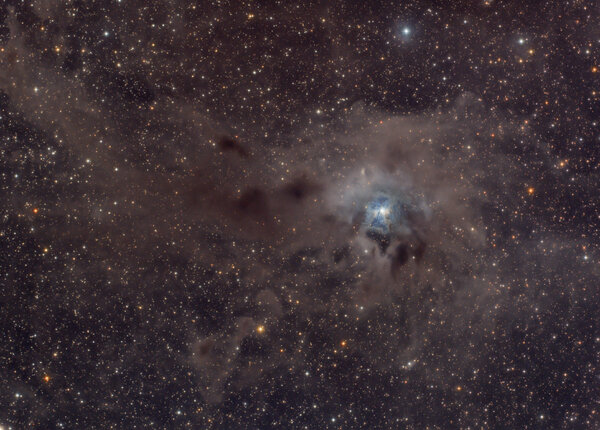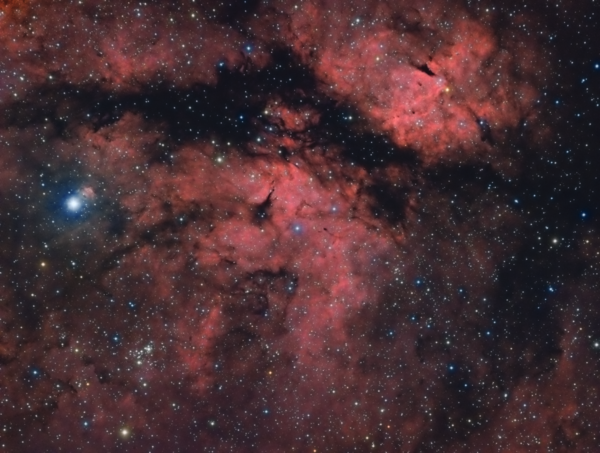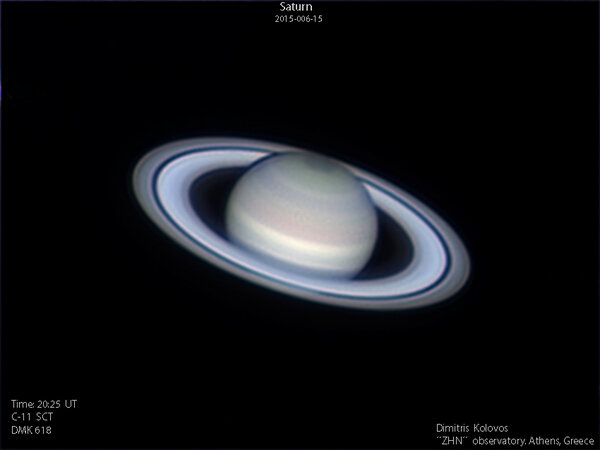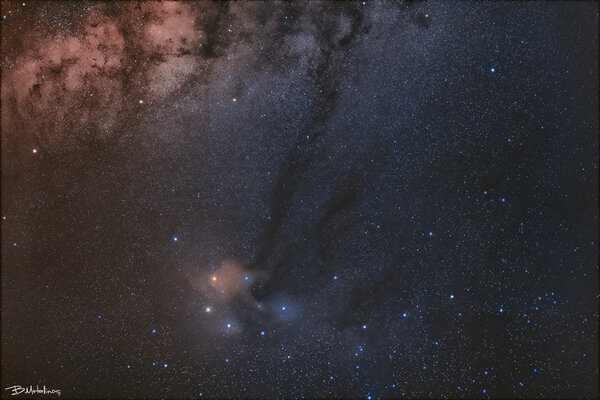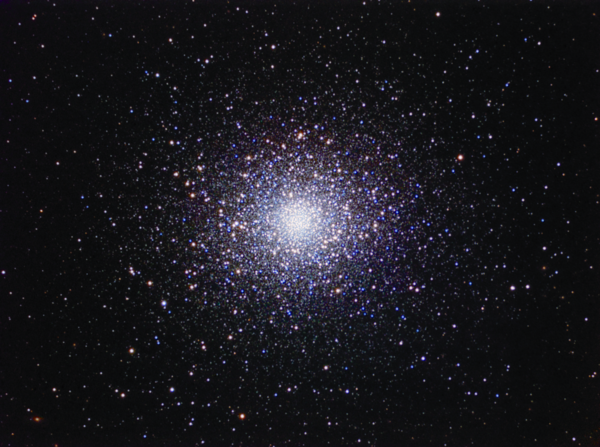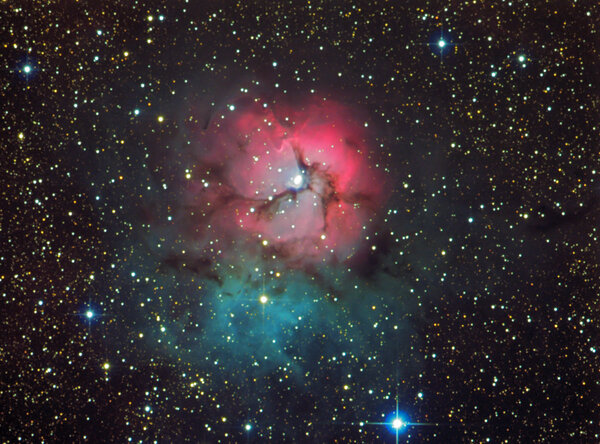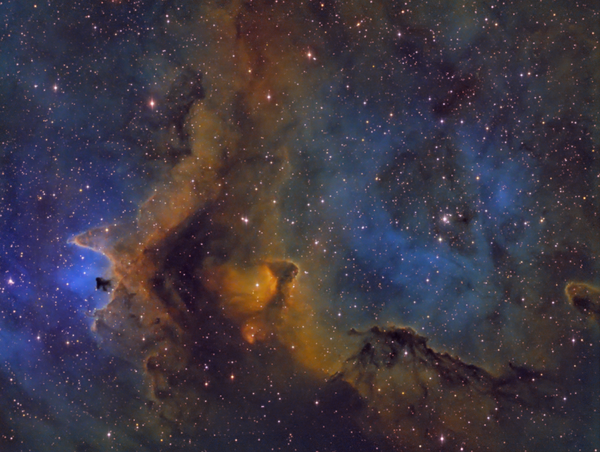-
Αναρτήσεις
955 -
Εντάχθηκε
-
Τελευταία επίσκεψη
Τύπος περιεχομένου
Forum
Λήψεις
Ιστολόγια
Αστροημερολόγιο
Άρθρα
Αστροφωτογραφίες
Store
Αγγελίες
Όλα αναρτήθηκαν από arasteo
-

Ngc 1499 - California Nebula
Ο arasteo σχολίασε σε Φαρμακόπουλος Αντώνης για αστροφωτογραφία Νεφελώματα
-
-

Το Νεφέλωμα της Καρδιάς και της Ψυχής (hubble Palette)
Ο arasteo σχολίασε σε dp297 για αστροφωτογραφία Νεφελώματα
-
-
-
From the album: Προσωπικό άλμπουμ του/της arasteo
-
IC 1795 is an emission nebula located about 6,000 light-years away in the constellation Cassiopeia. The dominant central star of IC 1795 is a blue dwarf on the main sequence. In addition there are three other stars of class O and B with ages between 3 and 5 million years. This being an age intermediate to the 6 to 20 million years of the shell structure that encloses the complex. The region is one of the sites most studied (besides Orion) for the formation of massive stars. This area is more dense and rich in H II. It is home to, and hides, a group of young blue stars, with their radiation ionizing the residual gas clouds. (WIKI). Instruments and exposure data: W.O FLT110 with dedicated TMB field flattener FeatherTouch 3'''''''' focuser Starizona MicroTouch autofocuser W.O ZS80 ED SBIG ST10XME CFW9 Meade DSI Filters: Ha 5nm Astrodon_S[iI] 8nm Baader_O[iII] 3nm Astrodon Sky-Watcher EQ6 Pro SII:55*7min bin1x1 Ha:60*7min bin1x1 OIII:51*9min bin1x1 Total exposure time:20h 43min Location: Vironas,Athens Greece
-
From the album: Προσωπικό άλμπουμ του/της arasteo
-
From the album: Προσωπικό άλμπουμ του/της arasteo
-
-
-
The Cave Nebula ( Sharpless 2-155, Caldwell 9) is part of an extensive region of ionized hydrogen gas region. Sharpless 2-155 is a dim and very diffuse nebula within a larger nebula complex containing emission, reflection, and dark nebulosity. It is located in the constellation Cepheus and associated with the Cepheus B giant molecular cloud, laying at a distance of about 2800 light-years. Part of the cloud is illuminated by a pack of hot, young stars known as the Cepheus OB3 association. Instruments and exposure data: W.O FLT110 with dedicated TMB field flattener FeatherTouch 3'''' focuser Starizona MicroTouch autofocuser W.O ZS80 ED SBIG ST10XME CFW9 Meade DSI Filters: Ha 5nm Astrodon_S[iI] 8nm Baader_O[iII] 3nm Astrodon Sky-Watcher EQ6 Pro Ha:50*8min bin1x1 S[iI]:63*8min bin1x1 O[iII]:57*8min bin1x1 Total exposure time:22h 40min Vironas,Athens Greece
-
From the album: Προσωπικό άλμπουμ του/της arasteo
The Trifid Nebula (catalogued as Messier 20 or M20 and as NGC 6514) is an H II region located in Sagittarius. It was discovered by Charles Messier on June 5, 1764.[3] Its name means ''''divided into three lobes''''. The object is an unusual combination of an open cluster of stars; an emission nebula (the lower, red portion), a reflection nebula (the upper, blue portion) and a dark nebula (the apparent ''''gaps'''' within the emission nebula that cause the trifurcated appearance; these are also designated Barnard 85). Viewed through a small telescope, the Trifid Nebula is a bright and peculiar object, and is thus a perennial favorite of amateur astronomers. From Wikipedia, the free encyclopedia Οι λήψεις ξεκίνησαν από 14 Ιουνίου και ολοκληρώθηκαν την 6 Αυγούστου , χρειάστηκαν συνολικά 7 νύχτες . Δυστυχώς, εκτός από το Ηα ,που δεν είχα τουλάχιστον νέφωση στα 2 επόμενα φίλτρα οι καιρικές συνθήκες ήταν άσχημες. Ο συνδυασμός όλων των παραπάνω και του χαμηλού ύψους του αντικειμένου δεν μου επέτρεψαν να πετύχω το αποτέλεσμα που πίστευα. Παρόλα αυτά κάτι βγήκε...πάμε για άλλα Instruments and exposure data: W.O FLT110 with dedicated TMB field flattener FeatherTouch 3'''''''' focuser Starizona MicroTouch autofocuser W.O ZS80 ED SBIG ST10XME CFW9 Meade DSI Filters: Ha 5nm Astrodon_S[iI] 8nm Baader_O[iII] 3nm Astrodon Sky-Watcher EQ6 Pro Ha:40*9min bin1x1 S[iI]:23*9min bin1x1 O[iII]:21*9min bin1x1 Total exposure time:12h 36min Vironas,Athens Greece -
-
The Trifid Nebula (catalogued as Messier 20 or M20 and as NGC 6514) is an H II region located in Sagittarius. It was discovered by Charles Messier on June 5, 1764.[3] Its name means ''divided into three lobes''. The object is an unusual combination of an open cluster of stars; an emission nebula (the lower, red portion), a reflection nebula (the upper, blue portion) and a dark nebula (the apparent ''gaps'' within the emission nebula that cause the trifurcated appearance; these are also designated Barnard 85). Viewed through a small telescope, the Trifid Nebula is a bright and peculiar object, and is thus a perennial favorite of amateur astronomers. From Wikipedia, the free encyclopedia Οι λήψεις ξεκίνησαν από 14 Ιουνίου και ολοκληρώθηκαν την 6 Αυγούστου , χρειάστηκαν συνολικά 7 νύχτες . Δυστυχώς, εκτός από το Ηα ,που δεν είχα τουλάχιστον νέφωση στα 2 επόμενα φίλτρα οι καιρικές συνθήκες ήταν άσχημες. Ο συνδυασμός όλων των παραπάνω και του χαμηλού ύψους του αντικειμένου δεν μου επέτρεψαν να πετύχω το αποτέλεσμα που πίστευα. Παρόλα αυτά κάτι βγήκε...πάμε για άλλα Instruments and exposure data: W.O FLT110 with dedicated TMB field flattener FeatherTouch 3'''' focuser Starizona MicroTouch autofocuser W.O ZS80 ED SBIG ST10XME CFW9 Meade DSI Filters: Ha 5nm Astrodon_S[iI] 8nm Baader_O[iII] 3nm Astrodon Sky-Watcher EQ6 Pro Ha:40*9min bin1x1 S[iI]:23*9min bin1x1 O[iII]:21*9min bin1x1 Total exposure time:12h 36min Vironas,Athens Greece
-
-
-
-
-
-
-

αντίο φίλε μου
arasteo απάντησε στην συζήτηση του/της G.OIKONOMOU σε Η γωνιά των νέων αστροπαρατηρητών
Το άστρο σου θα φωτίζει πάντα τη ψυχή και το μυαλό μας. Καλό ταξίδι Φίλε. -
A Cosmic fairy tale , Soul Nebula (Sharpless 2-199, LBN 667) is emission nebulae in Cassiopeia. Several small open clusters are embedded in the nebula: CR 34, 632, and 634[citation needed] (in the head) and IC1848 (in the body). The object is more commonly called by the cluster designation IC1848. Instruments and exposure data: W.O FLT110 with dedicated TMB field flattenerFeatherTouch 3'''' focuser Starizona MicroTouch autofocuser W.O ZS80 ED SBIG ST10XME CFW9 Meade DSI Filters: Ha 5nm Astrodon_S[iI] 8nm Baader_O[iII] 3nm Astrodon Sky-Watcher EQ6 Pro Ha:26*10min bin1x1 S[iI]:31*10min bin1x1 O[iII]:41*10min bin1x1 Total exposure time:16h20min


